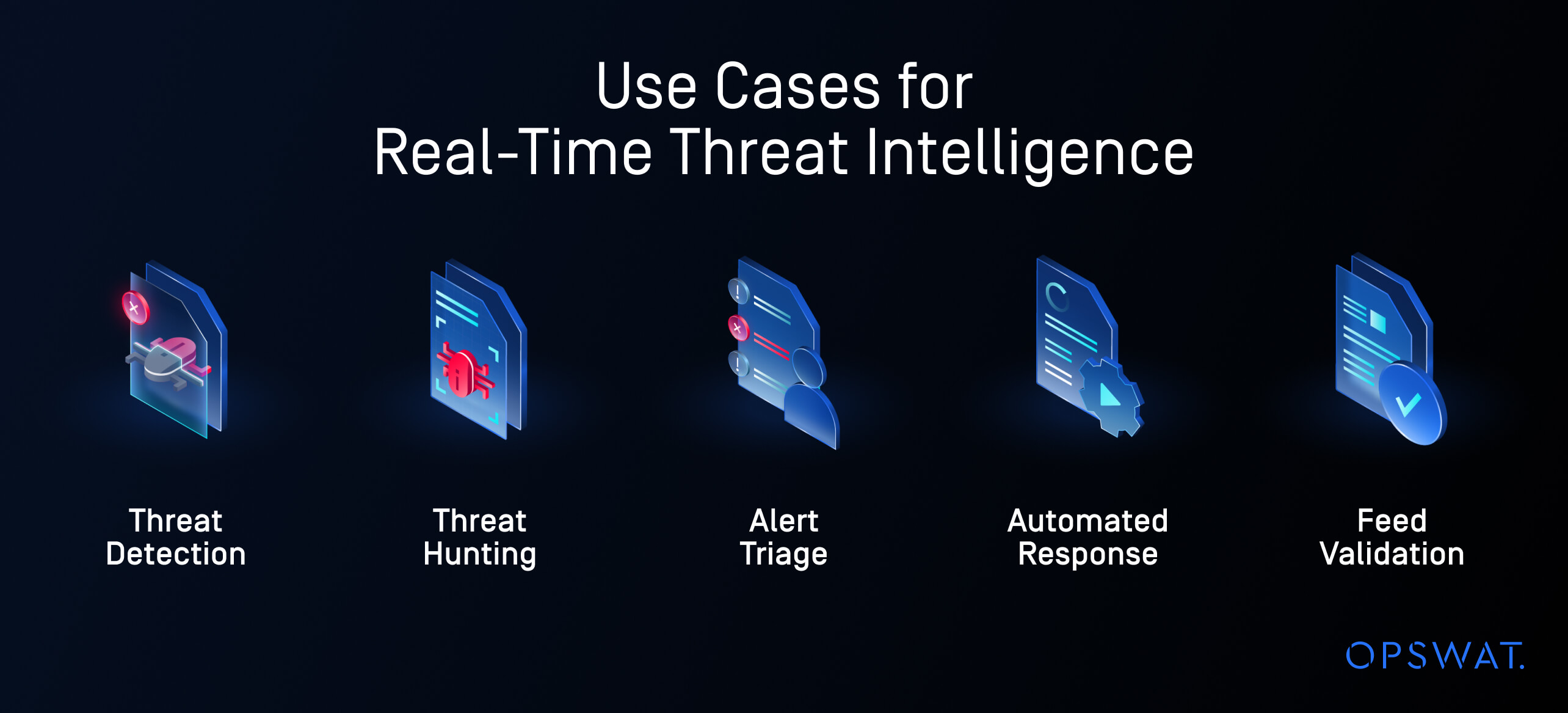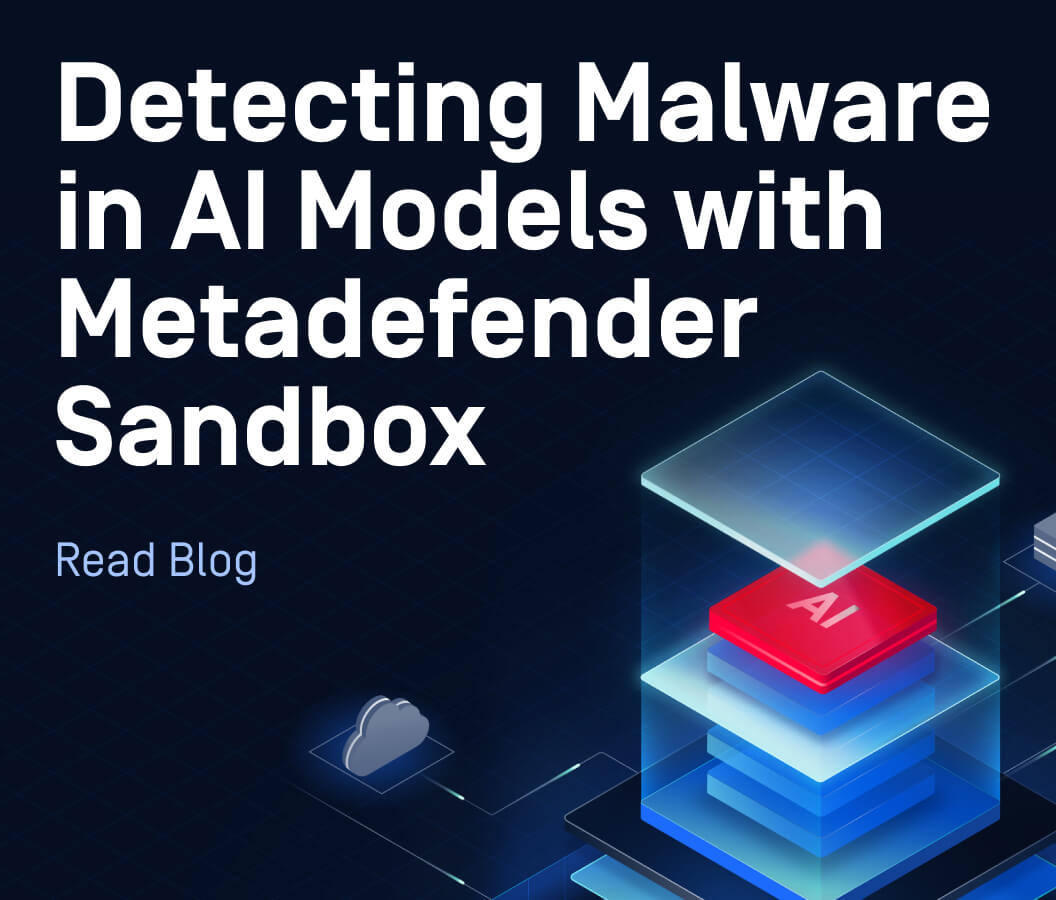- What is Real-Time Threat Intelligence?
- Why Traditional Feeds Fall Short
- What Makes Real-Time Threat Intelligence Effective?
- Automation, Enrichment, and Scale
- Data Quality vs. Data Volume
- Use Cases for Real-Time Threat Intelligence
- Challenges in Real-Time Threat Intelligence
- What to Look for in a Real-Time Intelligence Solution
- Frequently Asked Questions (FAQs)
What is Real-Time Threat Intelligence?
Real-time threat intelligence refers to the continuous process of collecting, analyzing, and disseminating data about active or emerging cyberthreats. The objective is simple but critical: to deliver insights fast enough to inform security decisions before damage is done.
This type of intelligence supports immediate awareness and action, enabling defenders to block malicious activity, prioritize alerts, enrich investigations, and adapt controls—often within seconds. Unlike periodic reports or static indicators, real-time intelligence reflects a live picture of the threat landscape.
But effectiveness hinges on more than speed. It requires the right data, curated with precision, and delivered in formats that security tools and analysts can act on without friction.
Why Traditional Feeds Fall Short
Many organizations consume generic threat feeds, often open source or aggregated in bulk. While useful for broad coverage, these feeds frequently suffer from noise, outdated indicators, or lack of context.
- False positives waste analyst time and erode trust in detection tools
- False negatives leave critical threats unnoticed
- Lack of context makes prioritization and understanding of threats difficult
Real-time intelligence addresses these shortcomings through targeted curation, timeliness, and automated integration into active defenses. It's not just about knowing faster but knowing what matters now.
What Makes Real-Time Threat Intelligence Effective?
The value of real-time intelligence comes from how it is collected, enriched, and applied. Effective programs typically blend machine-scale automation with human expertise.
Key characteristics of high-quality real-time intelligence include:
- Curated indicators: Signals validated through expert analysis, not just raw aggregation
- Adversary infrastructure tracking: Ongoing monitoring of command-and-control servers, phishing domains, and abuse of legitimate services
- Multi-source fusion: Combining telemetry, open sources, proprietary signals, and shared community intelligence
- Tactical relevance: Indicators aligned with active TTPs (tactics, techniques, and procedures) used in current campaigns
- Delivery readiness: Availability in formats and protocols that integrate with SIEMs, EDRs, firewalls, and TIPs
When done right, real-time intelligence helps defenders make sense of chaos—by connecting threat signals to threat context at machine speed.
Automation, Enrichment, and Scale
Modern threat intelligence systems must manage an enormous and constantly changing landscape. Automation plays a critical role here—both in gathering indicators and in assessing their value.
Examples of automation techniques include:
- Passive DNS correlation to surface relationships between malicious infrastructure
- Behavioral fingerprinting from malware analysis and sandbox detonation
- Heuristic scoring based on threat actor tradecraft, hosting environments, and domain behavior
- Natural language processing (NLP) to extract IOCs from public threat reports and unstructured sources
However, automation alone isn’t enough. Human analysts are still essential for discerning subtle threat signals, identifying emerging patterns, and avoiding misclassification. The most mature intelligence programs operate with a “human-in-the-loop” model that blends scale with judgment.
Data Quality vs. Data Volume
In real-time threat intelligence, more data is not always better. In fact, excess volume without quality often leads to alert fatigue, siloed analysis, and overlooked threats.
What matters more is data integrity, which includes:
- Timeliness: How fresh are the indicators? Are they tied to current campaigns?
- Accuracy: Are they properly attributed, or generic guesses?
- Relevance: Are the IOCs applicable to the organization’s industry, geography, and threat profile?
This is why many teams are shifting away from feed quantity and toward curated, context-rich intelligence. Indicators that are outdated, ambiguous, or overly broad do more harm than good.
Use Cases for Real-Time Threat Intelligence
Effective real-time threat intelligence supports a range of operational use cases across security teams, including:
- Threat detection: Matching indicators to traffic or file activity in SIEMs, EDRs, or NDRs
- Threat hunting: Retrospective analysis of historical data for missed IOCs
- Alert triage: Contextualizing alerts with known infrastructure associations or actor behavior
- Automated response: Triggering SOAR workflows or blocking traffic based on high-confidence indicators
- Feed validation: Measuring the quality of intelligence sources based on overlap, freshness, and relevance
When intelligence is timely and trustworthy, it transforms SOC operations—from reactive alert chasing to proactive threat elimination.

Challenges in Real-Time Threat Intelligence
Even the best-designed intelligence programs face obstacles, including:
- Latency: Delays in indicator processing or distribution reduce value
- Integration complexity: Getting intelligence into the right tools often requires custom connectors or API work
- Context loss: Stripped-down feeds lose nuance about how and why an indicator is malicious
- Noise tolerance: Teams may lack the capacity to triage incoming data at scale
Overcoming these challenges requires not only technology investment but also cultural and workflow alignment across intelligence, detection, and response teams.
What to Look for in a Real-Time Intelligence Solution
If you're evaluating threat intelligence services or building internal capabilities, prioritize:
- Curation over collection: High-quality, human-reviewed indicators
- Infrastructure insights: Visibility into the systems and services adversaries rely on
- Timely updates: Hourly or continuous refresh rates
- Flexible access: APIs, bulk downloads, and low-latency integration methods
- Alignment with MITRE ATT&CK: Mapping indicators to real-world techniques
Ultimately, real-time threat intelligence is not about data—it’s about decisions. The best intelligence enables defenders to move faster than their adversaries, with greater confidence and precision.
Frequently Asked Questions (FAQs)
Q: What is the difference between threat intelligence and real-time threat intelligence?
Threat intelligence is a broad field encompassing reports, indicators, and insights. Real-time threat intelligence focuses specifically on delivering that information fast enough to enable immediate action.
Q: What types of data does real-time threat intelligence include?
It typically includes indicators of compromise (IOCs) like IP addresses, domains, and URLs, as well as metadata about threat infrastructure, actor behavior, and observed campaigns.
Q: Why is data curation important?
Because unfiltered data leads to alert fatigue and inefficiency. Curation ensures that only relevant, high-confidence indicators are used in detection and response.
Q: How does real-time intelligence support automation?
It enables automatic blocking, alert enrichment, and retrospective hunting by feeding validated data directly into detection and SOAR systems.
Q: Can real-time intelligence be used for retrospective analysis?
Yes. High-quality indicators can be applied to historical logs to uncover threats that were previously missed.

